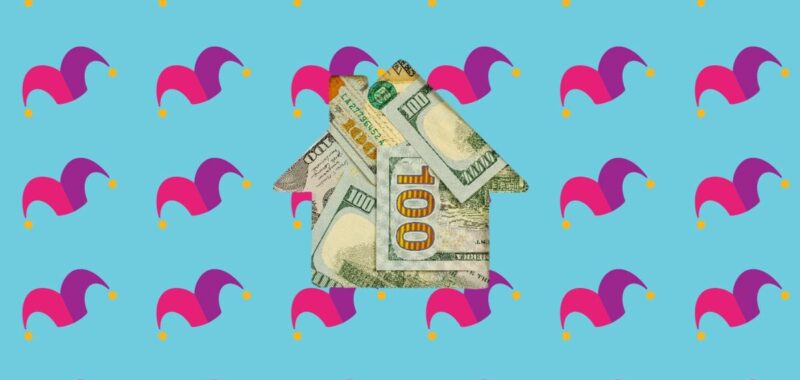Well, it’s unofficially official — there’s a federal funds rate cut coming in September, almost definitely, maybe certainly. This is what we’ve all been waiting for, a lower interest rate to temper the chronically high housing prices that have been a big part of the post-COVID-19 economy. But chatter and the CME FedWatch Tool says that we’re likely to only see a 0.25% interest rate drop in September.
While anything can help, I really don’t see that being enough to make a big difference right away. However, CME is predicting up to a 0.75% interest rate cut by the end of the year, and that’s definitely got my attention. Although the federal funds rate doesn’t directly affect mortgage rates, it highly influences them.
The difference less than a percent makes
As of Thursday, Aug. 22, the Federal Reserve Bank of St. Louis is reporting that the average interest rate for a 30-year fixed-rate mortgage is 6.46%.
Starting out at 6.46%, somewhere between a half percent and three quarters of a percent becomes a pretty serious change in psychology when it comes to interest rates. No longer will we be in the 6% range, but we’ll have dipped into the 5% range — a five-handle, as those in the know like to say.
And although that is certainly appealing, and may get a lot of new applications in for mortgage lenders, will it really make any difference to what people can afford?
Considering that those of us locked in 4% and under interest rates — a whopping 62% of homeowners with mortgages — might even get interested in putting our homes on the market when there’s a five-handle interest rate dangled in front of us, maybe so.
After all, a 5.8% mortgage still sounds like a mortgage that’s just 1 percent higher than we’re paying for a house we’ve long outgrown and are dying to swap out. That would help a lot with pricing pressures, which are still high due to the limited inventory. Even though inventory has climbed to four months’ worth, that’s still well below a balanced market.
Who will jump in with a five-handle?
As interest rates drop, homes will become more affordable, assuming prices don’t rise.
If you’ve got the 4% and under rateholders starting to sell at higher rates, it’s still very plausible that housing prices will remain steady as inventories increase, since we, too, will be looking for homes.
But the difference between a 6.5% mortgage payment and a 5.75% mortgage payment can be pretty substantial, as is evidenced in the chart below by calculating monthly mortgage payments using three different mortgage amounts (these figures are just principal and interest, with no additional add-ons like mortgage insurance).
| 5.75% | 6.00% | 6.25% | 6.50% | |
|---|---|---|---|---|
| $300,000 | $1,750.72 | $1,798.65 | $1,847.15 | $1,896.20 |
| $350,000 | $2,042.50 | $2,098.43 | $2,155.01 | $2,212.24 |
| $400,000 | $2,334.29 | $2,398.20 | $2,462.87 | $2,528.27 |
Data source: Author’s calculations.
For borrowers who have substantial equity, like the 4%ers, debt-to-income ratios may not matter very much, since we’ll be able to bring significant down payments, but for first-time home buyers, even a small change in interest can open up the market to more and more sidelined buyers.
As of 2022, the real median household income in the U.S. was $74,580, or $6,215 per month. If the median home sales price is $412,300, we can reasonably expect an average first-time borrower to be in that $300,000 to $400,000 borrowing range, depending on their down payment. Last year, the average down payment for a first time borrower was 8%.
Although conventional mortgages will sometimes allow a total debt-to-income ratio of up 45%, FHA loans, for example, want to see that the mortgage portion of your payment does not exceed 33% of your income. I made a chart for this, too. Let’s look at what the DTI is for various payments vs. the average household income.
| 5.75% | 6.00% | 6.25% | 6.50% | |
|---|---|---|---|---|
| $300,000 | 28% | 29% | 30% | 31% |
| $350,000 | 33% | 34% | 35% | 36% |
| $400,000 | 38% | 39% | 40% | 41% |
Data source: Author’s calculations.
With every quarter point of interest rate drop, that average borrower above is 1% further away from the cap of their debt-to-income ratio, increasing their odds for loan approval. With good enough credit and low enough debt, they can borrow at literally any price range in the chart. Even so, every quarter percent rate cut represents $155 of other debt that can co-exist with this mortgage.
Have a $300 personal loan payment? You’re in range of a $300,000 FHA mortgage at a 6% rate. Just bought a nice used car for $600 per month? You’ll comfortably fit into a conventional loan for $400,000 at 5.75%
Where there’s smoke, there might be fire
With so many potential buyers off the sidelines by the end of the year and back in the market, 2025 may look very different from the frustration many potential home buyers have faced in the last few years. The lower the rate, the more of the 4%ers who will give up their golden handcuffs, and more houses that will be on the market for sale.
But the flipside of that, of course, is that so many first-time buyers may also decide it’s time to jump in, pushing prices upward yet again as the housing market not only heats, but catches fire.

